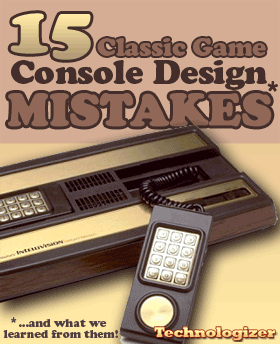 You may think you’re a pretty adept user of technology, but are you ready for the next level? Do you have the guts, the determination, and the penchant for arbitrary naming conventions to go pro?
You may think you’re a pretty adept user of technology, but are you ready for the next level? Do you have the guts, the determination, and the penchant for arbitrary naming conventions to go pro?
At Apple’s Worldwide Developer Conference this month, keynote presenter Phil Schiller explained that what had formerly been the 13″ aluminum MacBook now had what it took–FireWire 800, higher RAM capacities, and longer battery life–to be considered a MacBook Pro alongside larger-screened siblings. (The 13″ MacBook Pro also has a slot for Secure Digital cards which, unlike their Memory Stick rivals, never turned “Pro”) That leaves the entry-level white Macbook and the svelte MacBook Air as Apple’s “non-Pro” notebooks, although the MacBook Air is clearly targeted toward that user group often called “mobile professionals.” The lines are more clearly drawn between the pros and the no’s in Apple’s desktop line, where the pricey Mac Pro maintains high configurability and a high price, and the consumer line includes the LCD-based iMac and the hanger-on Mac mini.
But long before Apple renamed the PowerMacs and PowerBooks with the Pro label, the company used it on the software side. Back in 1993, Apple followed up its System 7 operating system with System 7 Pro. Quaintly touted in its press release as “the on ramp to the information superhighway,” it marked the debut of the PowerTalk messaging system, one of the company’s failed system software initiatives of the era along with OpenDoc and QuickDraw GX. On the other hand, System 7 Pro also featured two smash software hits that thrive in Mac OS toda, AppleScript and QuickTime.
Some of the Mac’s earliest applications also eventually went pro, as Apple’s Claris subsidiary churned out products such as MacDraw Pro and MacWrite Pro. But Claris was never spun out as had once been the plan, leaving its pro developers back at Apple. Even today, Apple continues to own FileMaker, Inc., the eponymous product of which is still called FileMaker Pro. (FileMaker Pro is the most basic version of the product–the more advanced one is known as FileMaker Pro Advanced.)
Microsoft has also associated databases with pros, making Access one of the applications included in Office Professional 2007, but its best-known pro product has been Windows XP Professional. XP Pro had a number of security and management enhancements beyond Windows XP Home, as well as multprocessor support, dynamic disk support, a personal Web server, and fax capabilities.
At its debut, Windows XP Professional boldly advertised its presence as a PC was starting up, but Service Pack 2 did away with that bit of vanity and all XP startup screens simply said “Windows XP”. With Windows Vista, Microsoft stopped focusing on “professional”-ism and instead gave users the business, Windows Vista Business, that is. And Windows 7 Business will arrive in the fall, where it will compete with a Mac OS X Leopard update that has added not “pro” but “snow”.
Microsoft has also developed a pro version of Windows Mobile optimized for touch-screen devices as opposed to the Windows Mobile Standard offering aimed at products such as the Motorola Q and Samsung BlackJack. But in what could be interpreted as a part of the image problem of Windows Mobile, AT&T has latched on to the “Pro” suffix to designate handsets that run Windows Mobile, period. The first example of this was with the Pantech Matrix Pro. a dual slider differentiated from the vanilla Pantech Matrix dual slider feature phone by running Windows Mobile. But the Matrix itself came after the Pantech Duo, which also ran Windows Mobile but lacked the “Pro” designation. More recently, AT&T followed up its successful Samsung Propel QWERTY vertical slider with the Propel Pro, the most “pro” phone on the market by dint of it having “pro” twice in its name. And yet, like the Matrix Pro, it doesn’t use the “pro” version of Windows Mobile.
Over at Sprint, HTC followed up on its launch with the HTC Touch, Sprint’s first touchscreen smartphone answering the iPhone, with the Touch Pro, which included a horizontal QWERTY keyboard; both phones ran Windows Mobile Professional. But how do you do the Touch Pro better? HTC added a larger screen and some spiffy call management and user interface features. The result is the Touch Pro2. Pro-“Pro” AT&T also carried the Touch Pro, but it called it the Fuze (which may be short for “con-Fuze-ing”). Now, of course, Sprint is answering the iPhone with the Pre, which we can only hope will never be followed by a Pre Pro.
In the end, “Pro” has become a tech product modifier so dependent on context that it has become meaningless. The flames aimed at it can be fueled by only one thing: “pro”-pain.
Ross Rubin is director of industry analysis for consumer technology at market research firm The NPD Group. He maintains his own blog at Out of the Box and you can follow him on Twitter at @rossrubin. Views expressed in Technoloizer are his own.
 We live in an, um, golden age of Apple gossip. Thanks to the blogosphere, a surging sea of sites cover an endless array of rumors about the company, from ones that are right on the money to ones that are partially right to ones that aren’t right at all. The conversation spawned by the scuttlebutt has helped many a site fill time during slow news days: No other company can set off a frenzy of speculation about matters as mundane as the quantity of USB ports a new machine might sport.
We live in an, um, golden age of Apple gossip. Thanks to the blogosphere, a surging sea of sites cover an endless array of rumors about the company, from ones that are right on the money to ones that are partially right to ones that aren’t right at all. The conversation spawned by the scuttlebutt has helped many a site fill time during slow news days: No other company can set off a frenzy of speculation about matters as mundane as the quantity of USB ports a new machine might sport.




 Today’s versions of Lunar Lander are easily taken for granted; they’re generally regarded as dinky games you can get for free–“Who would pay for that?”
Today’s versions of Lunar Lander are easily taken for granted; they’re generally regarded as dinky games you can get for free–“Who would pay for that?”
 [A NOTE FROM HARRY: Here’s the inaugural edition of a new feature: Technologizer Q&A. We’ll give you the opportunity to pose questions to interesting technology companies. First up is chipmaker AMD–many thanks to VP of Advanced Marketing Pat Moorhead for answering these queries.
[A NOTE FROM HARRY: Here’s the inaugural edition of a new feature: Technologizer Q&A. We’ll give you the opportunity to pose questions to interesting technology companies. First up is chipmaker AMD–many thanks to VP of Advanced Marketing Pat Moorhead for answering these queries. I’ve been thinking a lot about PC components lately–the obligatory, the optional, and even the controversial. That’s because I’ve been doing a
I’ve been thinking a lot about PC components lately–the obligatory, the optional, and even the controversial. That’s because I’ve been doing a  You may think you’re a pretty adept user of technology, but are you ready for the next level? Do you have the guts, the determination, and the penchant for arbitrary naming conventions to go pro?
You may think you’re a pretty adept user of technology, but are you ready for the next level? Do you have the guts, the determination, and the penchant for arbitrary naming conventions to go pro?